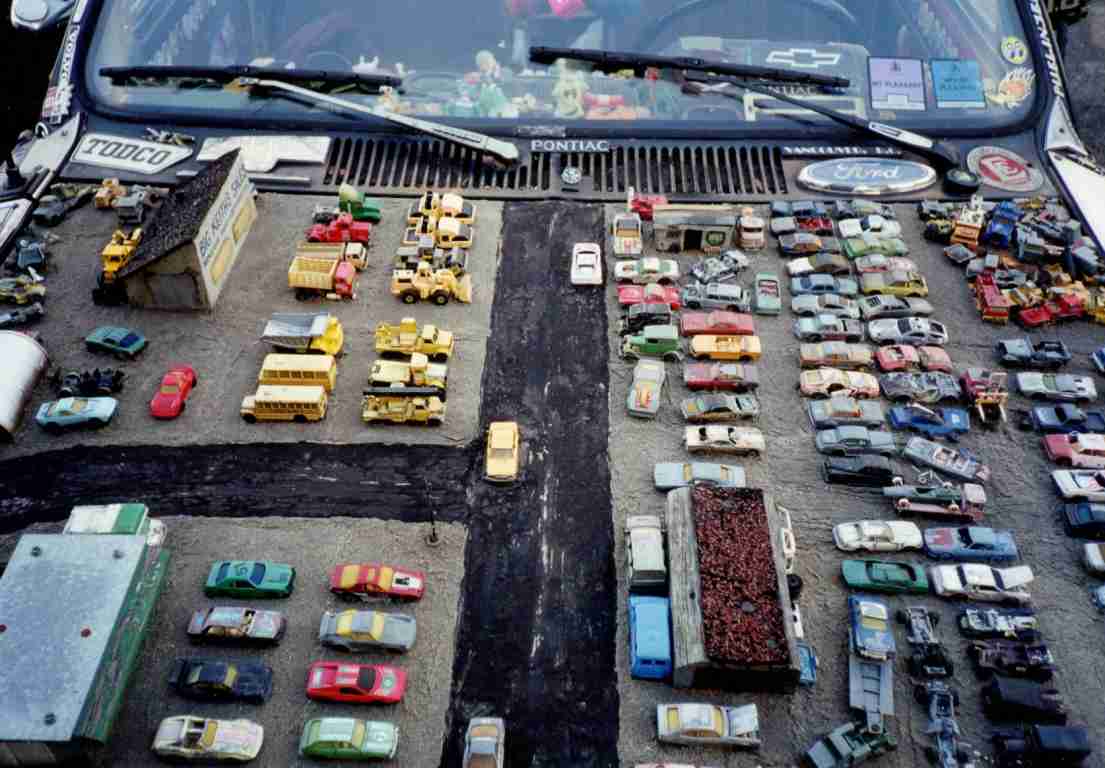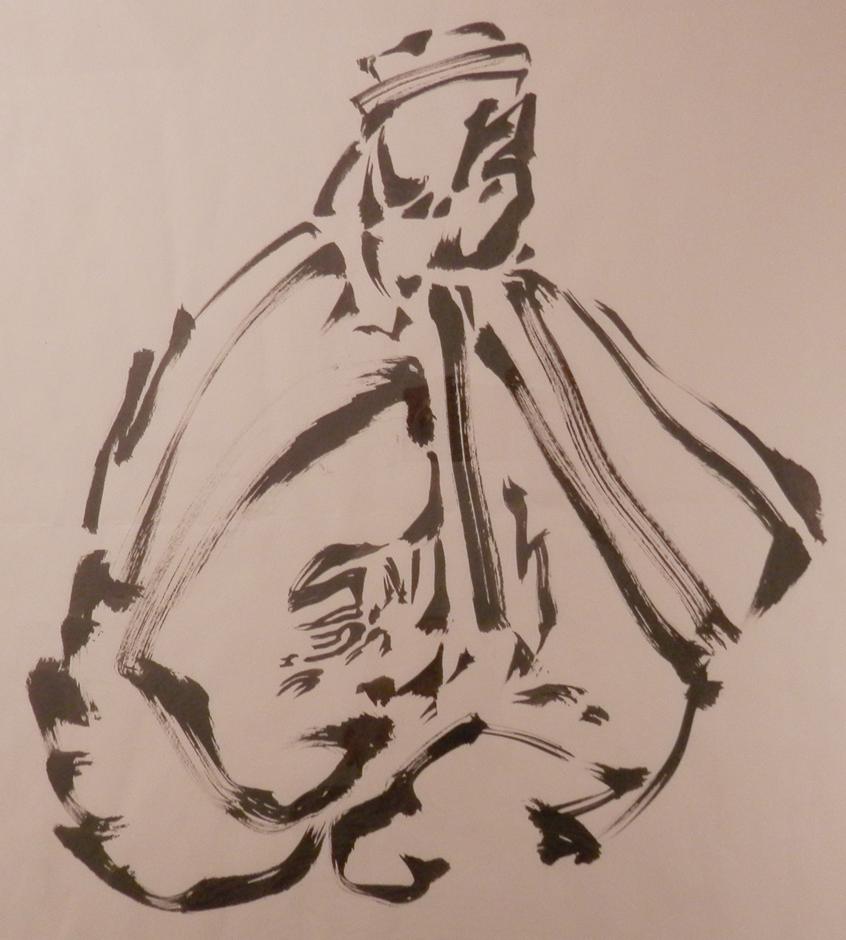
Art car, 35mm photograph by Gary Sim, May 2000
Ken Gerberick Art Cars
Ken Gerberick (1943 - 2021) was an interesting person. One of his main forms of artwork
was making "art cars" by covering vehicles with assorted decorations. These included toys,
trophies, car emblems, license plates, and anything else that he could stick onto a car.
He told me that he was often stopped by the police when driving the cars around, they were
mostly concerned that the decorations did not fly off the car when it was moving.
Ken collected material voraciously. He had KRAK Studio on Hastings Street in Vancouver,
adjacent to the communist Spartacus book store, and also owned a property on Vancouver
Island where he stored a lot of cars and items that he might use for an artwork. I visited
him at KRAK one day, it was an amazing space, stuffed full of material. He had a large
collection of early neon signs, many of which were lit up from a tangled web of wiring.

Jack Wise brush pen drawing, photograph by Gary Sim
Among many other items, he had a large collection of original brush pen drawings by Jack Wise
(q.v.) that Ken had collected at the Victoria College of Art when Wise was teaching there.
Ken said that Jack would do one or more "warm-up" brush pen drawings that he would then throw
into the wastepaper basket. Ken would later retrieve them and take them home. Ken
gave me one of them, which I later donated to the Burnaby Art Gallery. That turned out to be
the only drawing in the collection that survived the fire that destroyed the studio.

Art car, 35mm photograph by Gary Sim, May 2000
Ken also had a collection of Strowger switches, although he didn't know what they were. They
were electro-mechanical equipment from a telephone central office, where they had been used to
connect telephone calls as they were being dialled. It was referred to as a "step" system
because each switch would step a set of electrical sweeps up one notch as a phone call was
being made. If the number 8 was dialled, the switch would step up 8 times, than rotate the
sweeps across a set of contacts until a free line was found. It was a very complicated system,
but fairly easy to understand, since you could watch the switch doing its work. In BC this
system was replaced in the 1970s by EAX offices, Electronic Automated Exchanges, which used
computers instead of electro-mechanical equipment. I know this because I worked from
1973 to 1977 installing EAX central offces, and doing some of the last upgrades to the Step
system, including a Strowger Automatic Toll Ticketing (SATT) installation in Penticton.
I only found out in 2025 that Ken had passed away, so decided to post these images as a
kind of memorial to his work. RIP.
HOME



